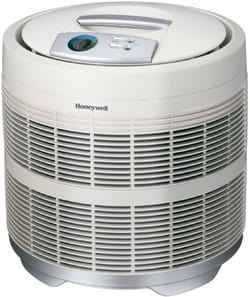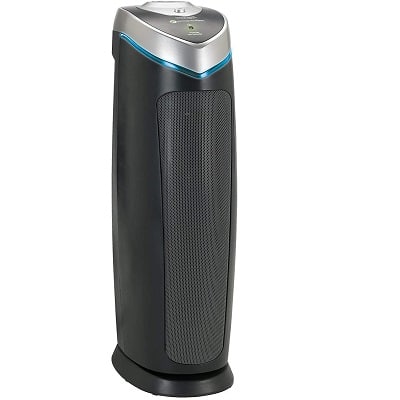When it comes to choosing an air purifier, you have plenty of options. However, before you get one, you should understand these devices’ tech specs and features, how they work, how you should operate them, and, most importantly, how to pick one that is best for your needs. Today, we discuss a few things about choosing the best air purifier and give you an example of a best-selling air purifier that made (and still makes) history.
Why Do You Need an Air Purifier?
People suffering various health-related issues like allergies, asthma and similar, require good vacuum cleaners with proper, true HEPA grade air filtration, but they can significantly benefit by using air purifiers – standalone devices that silently, but efficiently, clean air from small particles like dust, pollen, pet dander, mold spores, and other airborne pollutants.

Air purifiers come in various sizes and types and before even considering buying them, one must know what to actually look for.
Air Purifiers – Features and Specifications
There are several main features that determine the quality of air purifiers.
Room or area coverage
This feature describes the recommended maximum size of the room where air purifier can efficiently do its job and is given in square feet or square meters. If the room is regularly cleaned with HEPA grade vacuum cleaner, and there is no large influx of external particles, the actual room area can be even slightly larger than recommended by the manufacturer. However, if you have pets and kids and they often play outside, be sure to follow manufacturer’s recommendations.
Air Flow
More or less like in the case of vacuum cleaners, the airflow of an air purifier defines the amount of the air which can be processed by the device. This measure is given in the cubic feet per minute (CFM) or in cubic meters per. Most home units have several speeds which usually range from 100 to 500 (or even more) CFM. Note that larger airflow requires a larger pressure drop on the filters and hence, requires more energy and produces more noise.
 Noise Levels
Noise Levels
These are given in decibels (dB) and ranges from 30 to 55 (or rarely even more) dB. Air purifiers with passive airflow are very quiet. Their airflow in this mode is also rather limited. When choosing air purifier model, be sure that it has several speeds with the noise of the 1st speed low enough so that the device can be kept in the room where people/kids sleep and with the fastest speed fast enough to be able to clean the air in the single room within minutes, at most under 30 minutes, preferably under 15 minutes. Of course, this is far from being mandatory 🙂
For example, if the maximum airflow of the air purifier is 400 CFM and it is positioned in the 500 ft room (20 x 25 ft) and the ceiling is 9 ft high, the volume of the room is 4500 CFM – such air purifier can clean entire room in less than 12 minutes. Personally, I would consider quiet air purifier even with lower CADR rating (Clean Air Delivery Rate, given in CFM) for room of that size – low noise air purifiers operate 24/7 and rarely ‘must’ operate in such ‘panic’ mode.
Warranty
Air purifiers often come with very lengthy warranties – often 10 years or even more. However, one must be very careful and read warranty conditions. For example, models made for the US market operate at 110/120V, 60 Hz and if used abroad, even with electric converters, the warranty can be lost. Long story short – read the manual and warranty conditions, just to be sure.
Air Filtration Level
It is the most important feature of each air purifier – it is the reason why they are bought, after all. Air purifiers combine several filters, in order to achieve required air filtration and to prolong the life of each filter. Common air filters and filter technologies are:
Mechanical pre-filters
These filters are simple, washable filters that trap larger particles and extend the life of the inner filters.
Charcoal filters
They remove pollutants on the molecular level, they are very efficient and they remove pet odors, dangerous gases, and similar. However, charcoal filters must be replaced from time to time.
HEPA grade filters
They come in various classifications, but standard US definition of HEPA air filter (often called ‘True HEPA’) is: HEPA filters can remove at least 99.97% of particles 0.3 micrometers in size. There are NO 98% HEPA filters or anything similar – such claims are just marketing tricks.
Some HEPA filters are washable, some are not. Some manufacturers combine HEPA mechanical filters with ion technology.
 Note: the size of dirt particles commonly found in human-environment are:
Note: the size of dirt particles commonly found in human-environment are:
– bacteria 0.3-10.0 micrometers,
– pollen 10.0-100.0 micrometers,
– pet and human hair 30.0-200.0 micrometers,
– dust mites 90.0-600.0 micrometers,
– sand 50.0-1000.0 micrometers, etc.
For more about HEPA filters and HEPA filtration, feel free to check Exhaust Filtration – HEPA Vacuum Cleaners article.
Ionic air purifiers
They use locally generated ions to remove even the smallest air particles from the airflow. They have often combined with UV lamps that disinfect (plain and simple – kill) germs, viruses, bacteria, and other microorganisms that cause asthma, allergies, and other health issues. UV lamps are important for one other reason, too – filters are changed every few months or even years, so it is important to keep them sterile. Otherwise, the buildup of bacteria in the filters could potentially lead to new problems. Ionic purifiers produce a small amount of ozone, which helps to keep filters bacteria-free, but the amount of ozone in the exhaust air is kept very low, below a safe limit, since ozone can be very harmful, if present in larger amounts.
There are other filter technologies used in modern air purifiers: titanium dioxide (TiO2) is used to remove, among others, acidic gases from the air; thermodynamic air purifiers use a very hot plate(s) with micro-tubes to sterilize the air using heat (air is cooled before being released), etc.
Note that some of these technologies are used to sterilize the air, not to remove the particles from the air, and thus must be combined with HEPA and/or charcoal filters.
Dimensions
Desk air purifiers can be rather small and can fit on the most office desks. Larger purifiers are standalone units that can be transported from room to room, if required, or can be positioned on a permanent location. Wall-mounted air purifiers operate on a permanent location.
GermGuardian AC4825 – Bestselling Full Room Air Purifier

Here are some of the most important tech specs and features of the Germ Guardian!
- 3 in 1 air purifier for home
- True HEPA air filter reduces up to 99.97% of harmful germs, dust, pollen, pet dander, mold spores, and other allergens
- The UV C light helps kill germs and airborne viruses such as influenza, staph, rhinovirus, and more
- The pre-filter traps dust, pet hair, and other large particles while extending the life of the HEPA filter
- The Activated Charcoal filter helps reduce unwanted odors from pets, smoke, cooking fumes, and more
- Quiet operation
- 3-speed settings control
- Room size: 22-inch purifier filters air 4x per hour at max speed in medium to large rooms up to 167 square feet
How to Use An Air Purifier
Read the manual and warranty conditions, place the filters, turn the unit on and forget it, until onboard computer warns you that it is time to clean or change the filter(s).
Seriously, they are that simple. And the best of all, they often look rather stylish and decorative.
The Best Air Purifier – Is It Really Necessary?
The number of people suffering from allergies, asthma, and similar problems is increasing year after year. The amount of pollutants in the air is also increasing year after year.
So, long story short – if you do have such problems or want to limit exposure to pollutants in your environment (second-hand tobacco smoke, for example), good air purifiers can be of great help in order to improve the quality of life.

With a degree in engineering, Kathryn Hansen loves to write about how things work. Having her own dilemmas on how to pick the best vacuum cleaner for her large family (with a handful of furry four-legged members as well), Kathryn decided to help others in the same situation. After all, vacuum cleaners are critical to a healthy lifestyle and people have a hard time choosing the best one for their needs.
